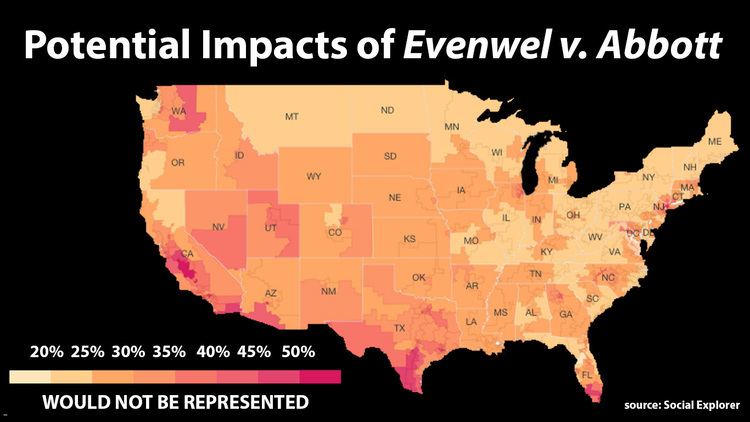Docket nos. 14-940 Argument Oral argument Location United States of America | Citations 578 U.S. ___ (more) Concurrence Thomas End date April 4, 2016 | |
 | ||
Majority Ginsburg, joined by Roberts, Kennedy, Breyer, Sotomayor, Kagan Similar Reynolds v Sims, Friedrichs v California, Zubik v Burwell, Foster v Chatman, United States v Texas | ||
Evenwel v abbott a debate
Evenwel v. Abbott, 578 U.S. ___ (2016), was a United States Supreme Court case in which the Court held that the one person, one vote principle under the Equal Protection Clause of the Fourteenth Amendment allows states to use total population, not just total voting-eligible population, in drawing of legislative districts.
Contents
- Evenwel v abbott a debate
- Statement by the pro tem on evenwel v abbott
- Background
- Question Presented to the Court
- Opinion of the Court
- References
Statement by the pro tem on evenwel v abbott
Background
The suit originated when Sue Evenwel and Edward Pfenninger filed suit in the United States District Court for the Western District of Texas, arguing that districts drawn based on total population dilute their vote compared to those in other Texas Senate districts. The district court dismissed the complaint for lack of a claim on which relief could be granted.
Question Presented to the Court
"Whether the 'one-person, one-vote' principle of the Fourteenth Amendment creates a judicially enforceable right ensuring that the districting process does not deny voters an equal vote."
Opinion of the Court
The Supreme Court affirmed the District Court and held that total population may be used in redistricting. It did not rule on whether states are permitted to base districts on the number of eligible voters instead of the total population.
